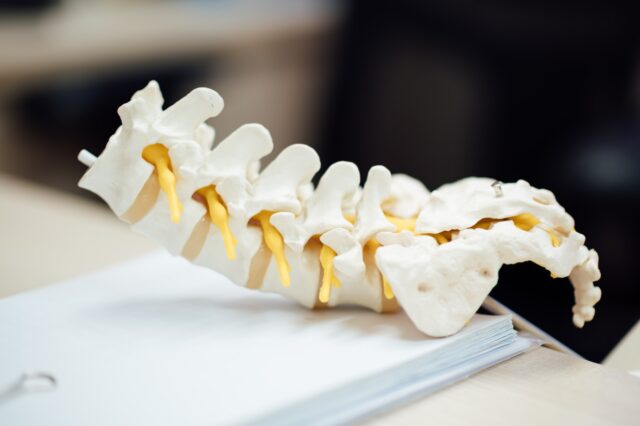
The spine is a fascinating and complex system that helps support the human body and facilitate mobility. However, injuries, degenerative disorders, and structural abnormalities can all cause spinal problems. When non-surgical therapies fail to relieve symptoms and improve quality of life, people should explore surgical approaches. In this article, we will look at common spinal disorders and the pso spine surgery alternatives for treating them.
When To Consider Back Surgery
Keep in mind that surgical methods for spinal disorders are usually explored after non-surgical therapies, like physical therapy, medicines, or injections, have been attempted and found to be unsuccessful. Surgery is often reserved for conditions that significantly impact a person’s quality of life or constitute a risk to their overall well-being.
The patient’s condition, symptoms, and general health will determine the recommended type of surgery. The surgeon will assess the patient, including imaging scans and clinical assessments, to select the best surgical technique.
The recovery time after spine surgery varies based on the operation and the individual’s general health. Physical therapy and rehabilitation are frequently prescribed after surgery to help recover mobility, strength, and function.
Common Surgical Procedures for Your Back
Herniated Disc
Pain, numbness, or weakening can result from the cushioning material between the spine’s vertebrae protruding. Herniated disc surgical therapy options include:
- Discectomy. The herniated section of the disc is removed to ease pressure on the nerves during this treatment.
- Microdiscectomy. Microdiscectomy is a less invasive variant of discectomy that uses small incisions and specialized devices to remove herniated disc material with less disturbance to surrounding tissues.
Spinal Stenosis
Spinal stenosis is a spinal canal narrowing that puts pressure on the spinal cord and nerves, causing pain, numbness, and trouble walking. Surgical options for spinal stenosis include:
- Decompressive laminectomy. The rear component of the vertebrae (lamina) is removed to provide greater room in the spinal canal and reduce strain on the patient’s nerves.
- Laminotomy. Laminotomy involves eliminating a smaller piece of the lamina to relieve pressure on the body’s nerves.
Scoliosis
Scoliosis is a spine disorder characterized by an abnormal lateral curve. Scoliosis surgery possibilities include:
- Spinal fusion. Spinal fusion is the merging of two or more vertebrae to correct curvature. The surgeon may employ rods, screws, or bone transplants to support the spine and encourage fusion.
- Growing rod surgery. This surgery is most commonly done on children who have progressive scoliosis. Surgically affixed to the spine, growing rods are regularly extended to permit growth and modified to straighten the curvature progressively.
Spinal Fractures
Spinal fractures can develop because of trauma or osteoporosis. Spinal fracture surgical treatments include:
- Vertebroplasty. A unique cement-like substance is injected into the cracked vertebra to fix it and give pain relief during this treatment.
- Kyphoplasty. Kyphoplasty involves employing a balloon-like device to create room in the damaged vertebra before injecting cement to fix it.
Spinal Tumors
Tumors around the spine usually cause heavy pain, paralysis, and neurological issues. Spinal tumor surgery possibilities include:
- Tumor resection. This procedure is about removing the tumor from the spine, frequently combined with additional therapies, such as chemotherapy.
- Spinal stabilization. If the tumor weakens the spine, surgical techniques to stabilize the spine and prevent additional damage may be undertaken.
What Are the Risks of Back Surgery?
The proximity of back surgery to the nervous system elevates its risk in comparison to other surgical procedures. Paralysis and infections are among the most dangerous consequences.
Even when surgery is successful, the recovery period might be lengthy. Healing time varies depending on the type of surgery and your pre-surgical health. You may also lose some flexibility in the long run.
How to Manage Pain During Recovery
Back surgery might result in significant postoperative discomfort. In the days and weeks following surgery, you should examine a variety of pain treatment choices. These choices should be reviewed with a pain management professional who can explain the benefits and drawbacks of each option.
Pain management anesthesiologists work with patients during the surgery to build a plan specific to their condition, personal history, and preferences. They will talk with you after surgery to assess what is and is not working and alter your pain management medication based on your degree of discomfort.
What Are the Considerations for Anesthesia?
General anesthesia is nearly always used during back surgery. There are dangers associated with the patient lying face down on the surgery table and the standard risks associated with anesthesia.
This posture alters the hemodynamics of the body or how blood flows through it. The position also restricts the surgical team’s ability to reach the patient’s airway. This necessitates extra caution when arranging equipment, monitors, the patient, and the anesthesiologist. It is critical to have an anesthesiologist present in the operating room to ensure that everything is set up appropriately and to be able to take fast action if anything goes wrong.
Conclusion
Surgical options play a significant role in resolving numerous spinal issues when non-surgical therapies are insufficient. Discectomy, decompressive laminectomy, spinal fusion, and tumor removal all attempt to reduce pain, rectify abnormalities, stabilize the spine, and enhance the overall quality of life. The surgical approach is adapted to each individual’s particular condition and needs, emphasizing maximizing results and supporting post-operative rehabilitation.










